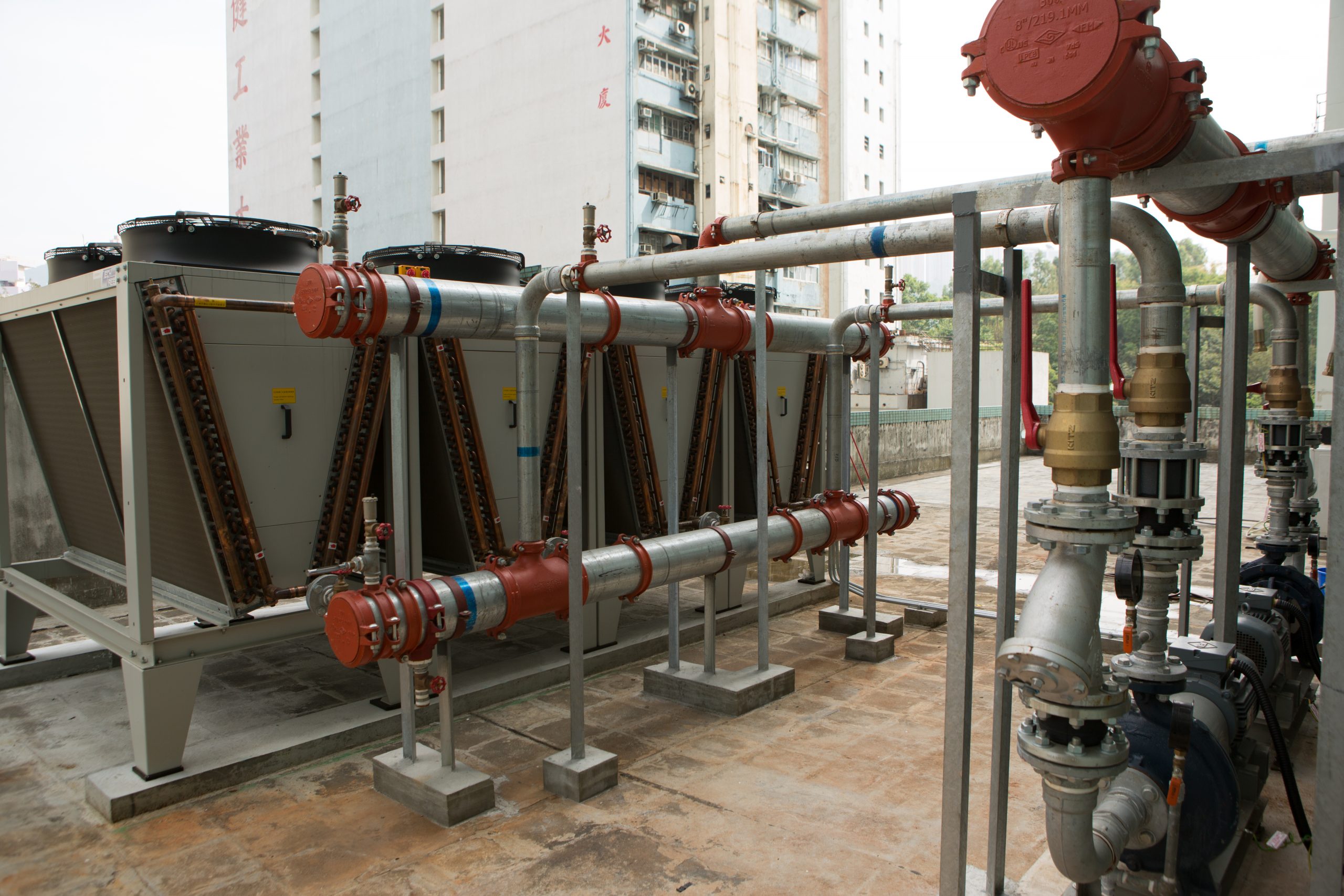You probably haven’t heard of Kar-Wing Lau, but your children and grandchildren may have him to thank for saving millions (if not billions) of metric tons of carbon dioxide from entering the atmosphere.
It takes a lot of electricity to power a data center. In fact, according to the US Department of Energy, data centers account for roughly 2% of energy consumption in the US, and just over 1% of energy consumption globally. Unfortunately, a substantial portion of this electricity is generated from burning fossil fuels. According to SuperMicro’s 2021 Data Centers and the Environment report, data centers are responsible for 2% of the world’s greenhouse gas emissions.
One of the biggest factors in data center energy consumption is air cooling. Servers generate a lot of heat, and if they get too hot, they stop working. Data centers invest a lot of money and resources towards keeping servers cool enough to function, including devoting space in the data center to housing and supporting chilled water or mechanical air cooling equipment. These latter systems are essentially large air conditioning units that continuously blow cold air near the servers. As you can imagine, this process is inefficient and, as a result, costly.
There are other methods that rely on outside air – with or without adiabatic support systems – to cool data centers. While more environmentally friendly than traditional air cooling, these methods have limitations of their own. Outside air can contain harmful contaminants and particulates along with being subject to rapid swings in humidity. And systems using adiabatic pre-cooling consume massive volumes of water to help reject the heat. What’s more, not all data centers can be situated in exceptionally cool or exceptionally dry climates.
Explosive new demands for data streaming brought on by the COVID-19 pandemic, combined with new data-intense technologies such as artificial intelligence (AI), IoT, 5G, high performance computing and cryptocurrency mining, require cooling capabilities beyond the limits of air and other cooling methods. In all these cases, it’s not just a question of reducing carbon emissions – it’s a practical challenge in terms of cost, space, and capacity.
A Technological and Ecological Turning Point
In 2012, Kar-Wing Lau had a radical idea. He and his engineering team would build the most energy-efficient data center in Hong Kong. The brutally hot and humid climate, high energy costs, spatial constraints imposed by a densely populated city, and the immense data processing needs of the company meant that traditional server cooling technologies would not be sustainable.
Out of necessity and ingenuity, Kar-Wing and 3M Corporation pioneered a groundbreaking new cooling technology that could address and overcome all of these challenges. Enter 2-phase liquid immersion cooling, which, as the name implies, involves immersing servers in a fluid, allowing the heat to be boiled away.
Other forms of immersion cooling had been around for a while. But the practical implementation of so-called “single-phase immersion” cooling has several drawbacks. The coolant, for example, must be pumped through an additional heat exchanger before rejecting heat to a water cooling circuit. 2-phase immersion cooling is self-contained. It’s also the case that single-phase immersion often employs mineral oil as the cooling fluid. This makes cleaning off IT equipment for servicing a major operation.
2-phase immersion cooling represents an alternative solution to these single-phase systems. This process relies on a non-toxic, environmentally safe dielectric fluid that, unlike oils, doesn’t require cleanup of IT hardware taken out for maintenance. Heat from the IT hardware causes the fluid to boil, transforming it from a liquid to a gas. This is called a phase change, and is phase 1 of the process. The benefit of this process is that once a fluid reaches its boiling point, it will not get any hotter. From then on, all of the heat energy goes into driving the phase change.
Phase 2 commences when the gas vapor turns back into a liquid thanks to a condensing coil positioned above the surface of the fluid where the vapor accumulates. The condensed fluid falls back into the tank as droplets, where the cycle begins again. No additional coolant pumps are required because the process is self-contained, and the fluid itself rarely has to be replaced. As a plus, if IT gear is removed from the DataTanks(tm), the fluid evaporates quickly and cleanly, making the IT equipment very easy to service. While this is a concern with regard to potential fluid loss, LiquidStack has developed patented technology to drastically minimize this risk.
Using this liquid cooling technology, Lau and his team built a powerful 500kW data center in Hong Kong. Despite Hong Kong’s hot and humid climate, the data center used nearly 95% less energy for cooling than comparable data centers, saving a staggering $64,000 on electricity costs per month. Additionally, the IT equipment in the data center used 10 times less space than traditional data centers. The entire system was located in an urban high-rise building and fits into the size of a standard shipping container.
“This data center project demonstrates the elegance of 2-phase immersion cooling and showcases that it has what it takes to be the new gold standard in the industry,” Lau said when the data center first launched. “Many of the companies that we partner with see the immediate benefits – technically and economically – and that it’s commercially viable.”
“There’s no denying,” he added, “that 2-phase immersion cooling has great potential for growth and will play an important role in the future.”
2-Phase Immersion Cooling Will Be The Standard
The massive savings in energy costs, space, and carbon emissions offered by 2-phase immersion cooling will have an impact across all industries. By eliminating the need for bulky heat sinks and space devoted to fans and air conditioning, it is already revolutionizing the design of data centers, high-performance computers, and edge-computing units. And by drastically reducing the amount of energy essentially wasted on cooling in data centers and elsewhere, it will shrink the carbon footprint of our entire digital infrastructure.
